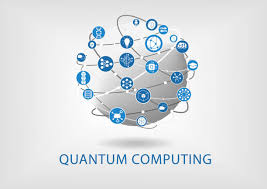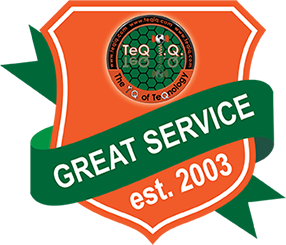
"Share this Info and Help a Friend"

NEW: AI Mobile and Desk Phone Service!
"AI Summary & Call Recording Transcribed on your Mobile/Desk Phone and PC"
HUGE Feature: "Note Taker for All Your Calls with AI Assistant Summary"
Now you can Review All of Your Calls with TeQ I.Q. Phone Service!
"Like Sales and Support Calls with AI Summary and Call Recording Transcription"
Have your All Phone Numbers Make Calls/SMS/MMS on your Mobile/Desk Phone/PC.
https://www.teqiq.com/phone
A technology leap comparable to the jump from vacuum tubes to integrated circuits has been achieved with the delivery of the first full-stack quantum computer built using a standard silicon CMOS chip fabrication process.
Quantum Motion (QM), maker of the computer, announced Monday that the hardware, which uses mass-manufacturable 300mm silicon CMOS wafer technology, has been deployed at the UKRI National Quantum Computing Centre in London.
A “full stack” computer includes the quantum processing unit (QPU), control electronics for managing qubit operations, a software stack, and a user interface.
The system also has a data-center-friendly footprint of just three 19-inch server racks.
“This is quantum computing’s silicon moment,” QM’s CEO James Palles-Dimmock said in a statement. “Today’s announcement demonstrates you can build a robust, functional quantum computer using the world’s most scalable technology, with the ability to be mass-produced.”
The company explained that its QPU is based on a scalable tile architecture that integrates all the necessary compute, readout, and control elements into a dense array that can be repeatedly printed onto a chip, enabling future expansion to millions of qubits per QPU. A qubit is roughly the quantum equivalent of a “bit” in the digital world.
“With the delivery of this system, Quantum Motion is on track to bring commercially useful quantum computers to market this decade,” QM’s President and Chief Commercial Officer, Hugo Saleh, said in a statement. “It’s a customer, user, and developer first approach — using standard CMOS, the basis for all modern technology, from mobile phones to AI GPUs, to deliver the revolutionary next inflection point in computing.”
Monumental Quantum Milestone
Quantum Motion’s achievement is yet another click forward in the introduction of quantum as a computer “on a chip,” observed Roger A. Grimes, author of “Cryptography Apocalypse: Preparing for the Day When Quantum Computing Breaks Today’s Crypto.”
“It continues to take quantum computers and other devices from the realm of big, specialized computers that cost tens of millions and have to be run and maintained by a bunch of high-paid scientists and researchers, and puts it closer into the hands of someone who just wants a computer and not to spend most of their time babysitting for the right conditions,” he said.
“The delivery of a full-stack quantum computer built using a standard silicon CMOS chip fabrication process is a monumental milestone for the quantum industry,” added Ensar Seker, CISO of SOCRadar, a threat intelligence company in Newark, Del.
“It signifies a critical convergence of quantum mechanics and classical semiconductor engineering, essentially opening the door to scalable, manufacturable quantum computing using the same infrastructure that underpins modern digital electronics,” he said.
“Silicon-based quantum architectures are particularly compelling because they leverage decades of investment in CMOS manufacturing, supply chain maturity, and quality control,” he said. “This contrasts with other technologies like superconducting qubits or trapped ions, which typically require highly specialized environments, exotic materials, and custom fabrication processes that are harder to scale and integrate with existing systems.”
Catching Up With Competing Tech
Up to now, silicon-based quantum computer development has lagged behind superconducting and atom-based technologies, but Quantum Motion is changing that narrative. “I think that we’re finally seeing that solid-state quantum technologies are catching up to the announcements from the superconducting and atomic platforms,” said Prineha Narang, a professor of physical sciences and of electrical and computer engineering at UCLA.
“This is another way to go at it, and it’s a scalable way,” she said.
Quantum Motion’s system uses spin qubits, which store and manipulate information using the spin of electrons. “Silicon spin qubits are generally behind in development compared to superconducting circuits, trapped ions, and neutral atom qubit modalities,” explained Sam Lucero, an independent strategy and research consultant in Phoenix.
“This announcement marks the first full implementation of a silicon spin qubit computer that I’m aware of, which is notable as a signpost of this modality’s progress,” he said.
“Since there is no performance data, it’s not clear how this machine will compare to other available platforms at the moment, but I’d expect it to be fairly rudimentary in comparison,” he said.
He acknowledged that QM’s technology could potentially scale much better than superconducting and trapped ion systems. “You could have millions of qubits on a single chip, avoiding the need for complex networking,” he explained, “but there are those who think networking will be unavoidable, and those in the industry who think it will be a real barrier to the full realization of quantum computing.”
“Both networking and scaling up are still in early stages, though, so it’s not clear which, either, or if both will succeed,” he added.
Error Correction Challenge
Yuval Boger, chief commercial officer at QuEra Computing, a builder of quantum computers using neutral atoms, in Boston, noted that there are several promising approaches to building a quantum computer, and Quantum Motion’s silicon path is certainly one of them. “In my mind, many of these different approaches are worth exploring, since it’s still too early to know which will scale most effectively,” he said.
“This announcement shows growing recognition that quantum computing is coming, and that the potential value is substantial,” he said. “However, error correction, system reliability, and manufacturability determine timelines to commercialization.”
Austin Bosarge, co-founder and chief corporate officer and head of federal at QuSecure, a maker of quantum-safe security solutions, in San Mateo, Calif., agreed that error correction is a big problem for quantum computers.
“Turning large numbers of noisy, unstable qubits into a small number of reliable and fault-tolerant logical qubits requires significant resources,” he said. “Although that problem is still being addressed, this announcement shows real progress on the scalability side.”
In addition to error correction, he noted that quantum systems still require advanced cryogenics, complex control electronics, and precise calibration. “These technical demands create engineering and cost barriers that must be overcome before quantum computing becomes commercially viable at scale.”
Quantum’s Impact on Encryption
However, Bosarge continued, the real concern is not about the availability of general-purpose quantum machines. The issue is the timeline for when quantum computers will be capable of breaking encryption.
“Industry forecasts suggest that by the year 2029, the probability of a cryptographically relevant quantum computer will be high enough that organizations must adopt quantum-safe encryption in advance,” he said.
“A cryptographically relevant system is generally defined as one with about 4,000 error-corrected qubits,” he explained. “The announcement from Quantum Motion shows that these kinds of systems may now be manufactured in standard chip foundries. That lowers the barrier to scale and increases the urgency of preparing digital infrastructure.”
“Quantum computers are scaling up rapidly, but are not yet to the point where we know how to build cryptographically relevant quantum computers; but that day will come, because the technology is proven, and it is now just an engineering problem,” added Tim Hollebeek, vice president of industry standards at DigiCert, a global digital security company.
“Advances like [Quantum Motion’s], that integrate quantum computing elements into standard chip-building processes, continue to bring us one step closer to their eventual existence,” he said.
If this tip helps and you would like to donate click on the button. Thanks In Advance.
________________________________________________________________________________________________________
"Fortune Favors, Who Value Time over Money!"
"TeQ I.Q. was the 1st IT Company to Deliver Cloud Solutions since 2003"
Tech issues taking up your Time?
"TeQ I.Q. Makes Your Technology Secure and Protected"
Do you have Tech Frustrations like your Computer, Internet, Phone, Cellphone, Camera, TV, Car?
"We Take Away Your Tech Frustrations and Give You the Free Time You Deserve!"
Call Robert to ask all your Technology questions.
For Free Consultation Call Now Robert Black at (619) 255-4180 or visit our website https://www.teqiq.com/
Chase Bank and Others Trust TeQ I.Q. with their IT and TeQnology so can you!



